-
 Bitcoin
Bitcoin $106,731.2224
-1.05% -
 Ethereum
Ethereum $2,444.9804
-1.20% -
 Tether USDt
Tether USDt $1.0003
0.01% -
 XRP
XRP $2.1882
0.09% -
 BNB
BNB $651.1435
-0.61% -
 Solana
Solana $148.3252
-2.09% -
 USDC
USDC $1.0000
0.01% -
 TRON
TRON $0.2787
0.55% -
 Dogecoin
Dogecoin $0.1598
-3.16% -
 Cardano
Cardano $0.5520
-2.43% -
 Hyperliquid
Hyperliquid $39.0960
-2.64% -
 Bitcoin Cash
Bitcoin Cash $516.9519
2.98% -
 Sui
Sui $2.7011
-2.95% -
 Chainlink
Chainlink $13.0582
-1.71% -
 UNUS SED LEO
UNUS SED LEO $8.9250
-2.53% -
 Stellar
Stellar $0.2359
-0.18% -
 Avalanche
Avalanche $17.3856
-3.73% -
 Toncoin
Toncoin $2.8095
-3.56% -
 Shiba Inu
Shiba Inu $0.0...01121
-1.95% -
 Litecoin
Litecoin $85.2795
-0.85% -
 Hedera
Hedera $0.1471
-2.15% -
 Monero
Monero $319.8004
1.12% -
 Dai
Dai $1.0001
0.01% -
 Ethena USDe
Ethena USDe $1.0001
0.02% -
 Bitget Token
Bitget Token $4.5344
-1.07% -
 Polkadot
Polkadot $3.3224
-2.96% -
 Uniswap
Uniswap $6.9697
-2.75% -
 Aave
Aave $266.1658
-2.25% -
 Pepe
Pepe $0.0...09414
-3.41% -
 Pi
Pi $0.4913
-3.29%
How to connect wallet to an exchange?
Connecting your crypto wallet to an exchange allows seamless fund transfers while maintaining control over your private keys.
Jul 01, 2025 at 10:10 am
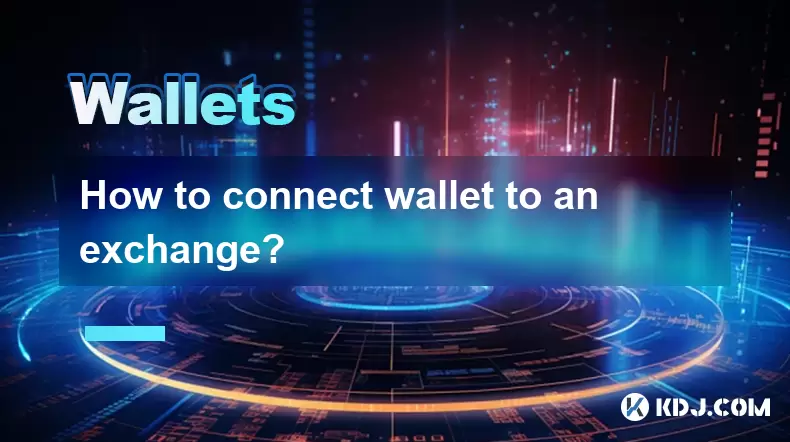
What is a Wallet and Why Connect It to an Exchange?
A wallet in the context of cryptocurrency is a digital tool that allows users to store, send, and receive cryptocurrencies securely. Wallets can be software-based (such as mobile or desktop apps) or hardware-based (physical devices). Connecting your wallet to an exchange enables seamless transfer of funds between your personal wallet and the exchange platform.
The primary reason for connecting a wallet to an exchange is to facilitate trading and fund management. Exchanges typically do not provide full control over private keys, which means storing large amounts of crypto on an exchange can be risky. By using a personal wallet and linking it to the exchange, users maintain control while still being able to trade efficiently.
Before proceeding, ensure you have:
- A compatible wallet (e.g., MetaMask, Trust Wallet)
- The exchange app or website ready
- Your wallet address copied
Steps to Locate the Deposit Section on the Exchange
Once logged into your exchange account, navigate to the deposit section. This area is where you will input your wallet address to receive funds from the exchange. Different exchanges may label this section differently—some use "Deposit" under the "Wallet" menu, while others might have a separate tab labeled "Funds" or "Transfer."
Look for options such as:
- Deposit Crypto
- Deposit Funds
- Wallet Deposit
Clicking on one of these should bring up a list of supported cryptocurrencies. Select the one you wish to deposit, and the system will display a unique deposit address associated with your account. This is where you will paste the receiving address from your wallet.
How to Copy Your Wallet Address Correctly
To connect your wallet to the exchange, you must copy the correct wallet address from your wallet application. Open your wallet and navigate to the "Receive" section. Here, you will see a long alphanumeric string—this is your public wallet address.
Important considerations:
- Ensure the selected cryptocurrency matches what you're depositing
- Avoid copying any extra spaces or characters
- Do not copy your private key or seed phrase
Some wallets also allow you to scan a QR code instead of manually entering the address. If both the exchange and your wallet support this feature, scanning the QR code displayed on the exchange’s deposit page can simplify the process and reduce the risk of errors.
Pasting the Wallet Address into the Exchange
Now that you have your wallet address copied, go back to the exchange's deposit page and look for an option to enter a custom wallet address. Some platforms require you to manually paste the address, while others may auto-fill after scanning a QR code.
Steps to follow:
- Locate the field labeled "Recipient Address" or "Withdrawal Address"
- Paste your wallet address carefully
- Double-check for typos or missing characters
- Confirm the network (e.g., Ethereum, Binance Smart Chain)
It's crucial to verify the blockchain network because sending funds via the wrong network can result in permanent loss. For example, if you choose the BSC (Binance Smart Chain) network but your wallet only supports Ethereum, the transaction might fail or become unrecoverable.
Confirming the Connection and Initiating the Transfer
After pasting your wallet address and selecting the correct network, review all details before confirming. Most exchanges will prompt you to confirm the transaction either through email, SMS, or two-factor authentication (2FA). Once confirmed, you can proceed to initiate the transfer.
Initiating steps typically include:
- Entering the amount to transfer
- Reviewing transaction fees
- Clicking the "Send" or "Confirm" button
Once the transaction is initiated, the funds will begin processing. Depending on the blockchain congestion and network speed, it may take several minutes for the funds to appear in your wallet. You can monitor the status using a blockchain explorer by entering your transaction hash.
Frequently Asked Questions
Q: Can I connect multiple wallets to one exchange account?
Yes, most exchanges allow users to connect multiple wallets. Each time you want to deposit from a different wallet, simply repeat the process of copying the new wallet address and pasting it into the exchange’s deposit section.
Q: What happens if I send funds to the wrong network?
If you mistakenly send funds using an incompatible network, the transaction may not be recognized by the receiving wallet. In some cases, recovery is possible if the exchange or wallet provider offers cross-chain support, but this is not guaranteed.
Q: Is it safe to link my wallet to an exchange?
Linking your wallet to an exchange is generally safe as long as you follow security best practices. Always double-check addresses, enable 2FA, and avoid sharing private keys. However, never leave large sums of cryptocurrency on an exchange for extended periods due to potential security risks.
Q: Do I need to reconnect my wallet every time I log in to the exchange?
No, once you've successfully connected your wallet and made a deposit or withdrawal, the exchange usually saves your address for future use. However, if you're using a new device or clearing cookies, you may need to re-enter your wallet address again.
Disclaimer:info@kdj.com
The information provided is not trading advice. kdj.com does not assume any responsibility for any investments made based on the information provided in this article. Cryptocurrencies are highly volatile and it is highly recommended that you invest with caution after thorough research!
If you believe that the content used on this website infringes your copyright, please contact us immediately (info@kdj.com) and we will delete it promptly.
- Deutsche Bank's Bitcoin Custody Play: A New York Minute on Crypto Services
- 2025-07-01 22:30:12
- ZachXBT, Ripple, and RLUSD Adoption: A Deep Dive
- 2025-07-01 22:30:12
- Open XP Redemption on Optimism: Get Ready for OP Tokens on July 15!
- 2025-07-01 22:35:12
- Altcoins in June 2025: Data, Trends, and What's Next for Crypto
- 2025-07-01 21:30:12
- SUI Price Breakout Watch: Will 2025 Forecasts Hit the Mark?
- 2025-07-01 21:30:12
- BTCBULL: Riding Bitcoin's Bull Run to Crypto Glory
- 2025-07-01 20:30:11
Related knowledge
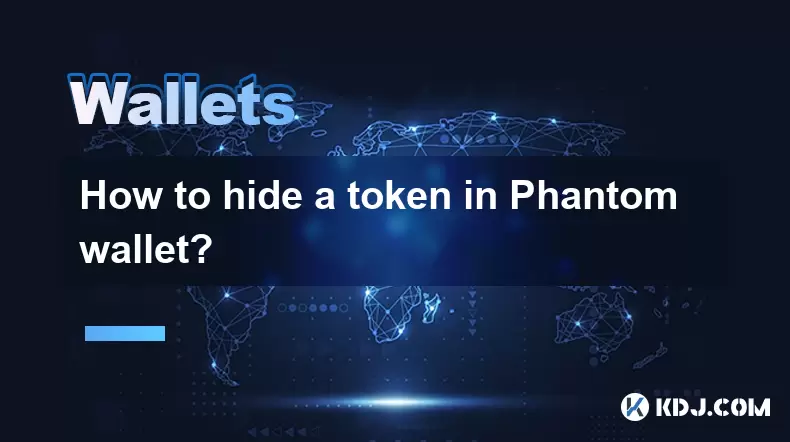
How to hide a token in Phantom wallet?
Jul 01,2025 at 05:49pm
Understanding the Phantom Wallet InterfacePhantom wallet is a popular non-custodial wallet used primarily for interacting with the Solana blockchain. It allows users to store, send, receive, and manage various tokens, including both fungible and non-fungible tokens (NFTs). Before attempting to hide a token, it's essential to understand how the wallet in...
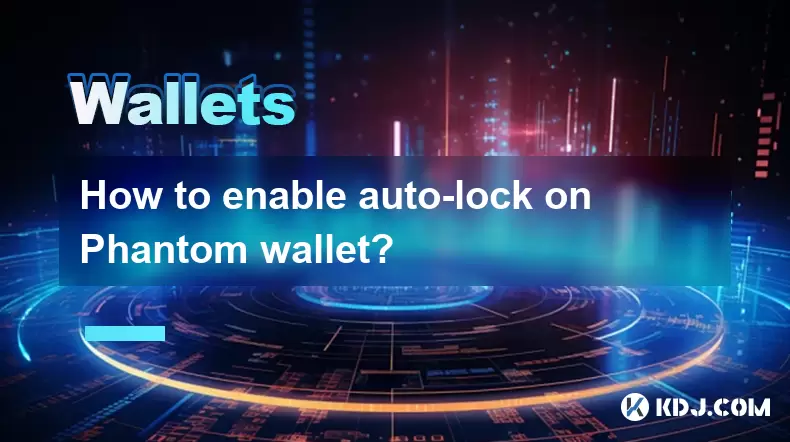
How to enable auto-lock on Phantom wallet?
Jul 01,2025 at 04:01pm
What is Auto-Lock in Phantom Wallet?Phantom wallet is a popular non-custodial cryptocurrency wallet used primarily for interacting with the Solana blockchain. One of its security features includes the ability to set an auto-lock timer, which ensures that the wallet locks itself automatically after a period of inactivity. Auto-lock enhances security by p...
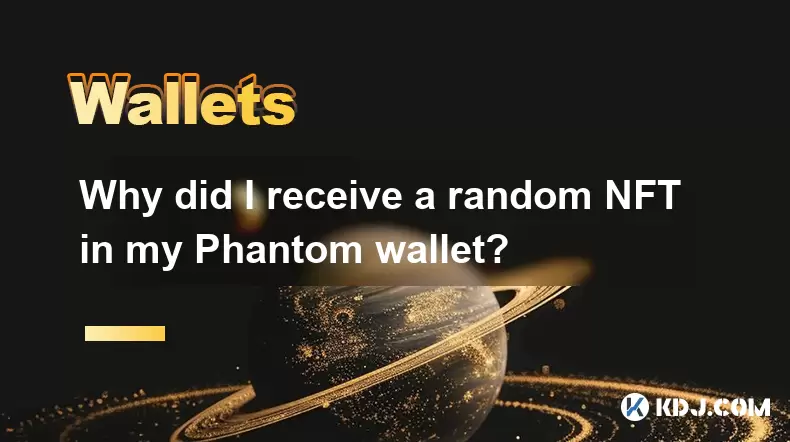
Why did I receive a random NFT in my Phantom wallet?
Jul 01,2025 at 09:00pm
Receiving an Unexpected NFT in Your Phantom WalletIf you've recently opened your Phantom wallet and noticed an unfamiliar NFT appearing in your collection, you're not alone. Many users have reported receiving random or unsolicited non-fungible tokens, often without any prior interaction with the project or sender. This phenomenon has become increasingly...
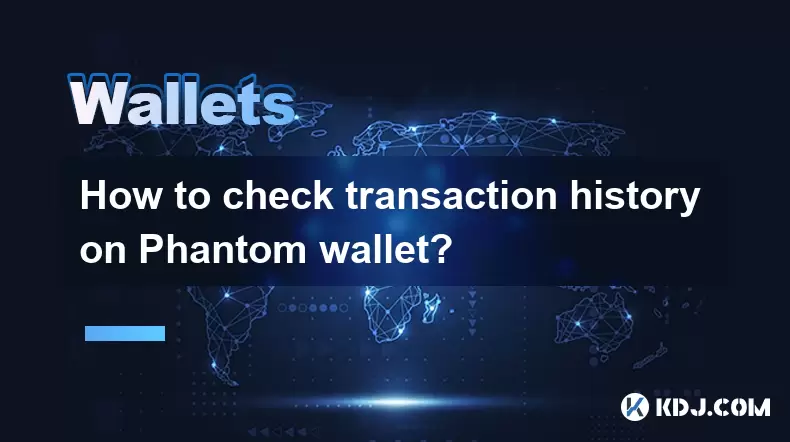
How to check transaction history on Phantom wallet?
Jul 01,2025 at 07:49pm
What Is Phantom Wallet?Phantom wallet is a popular non-custodial cryptocurrency wallet primarily used for interacting with the Solana blockchain. It allows users to store, send, receive, and manage their Solana-based tokens and NFTs securely. One of the essential features of any crypto wallet is the ability to check transaction history. Understanding ho...
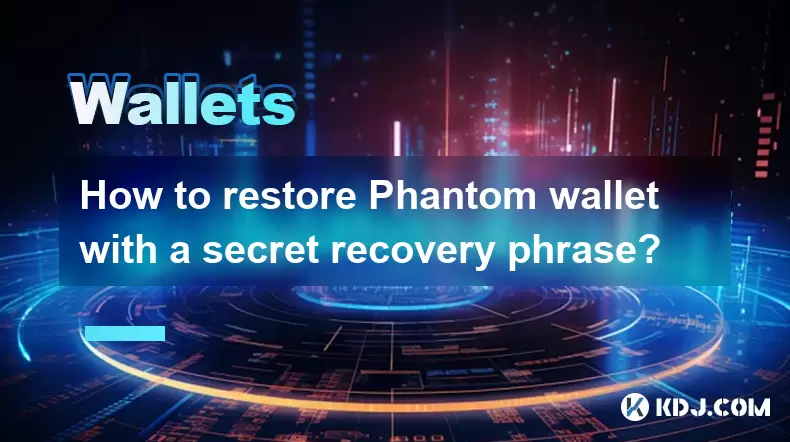
How to restore Phantom wallet with a secret recovery phrase?
Jul 01,2025 at 02:56pm
What is a Phantom wallet and why might you need to restore it?Phantom is a popular non-custodial cryptocurrency wallet primarily used for interacting with the Solana blockchain. It allows users to store, send, receive, and stake SOL tokens as well as manage NFTs and other SPL tokens. Since Phantom wallet is non-custodial, users are solely responsible fo...
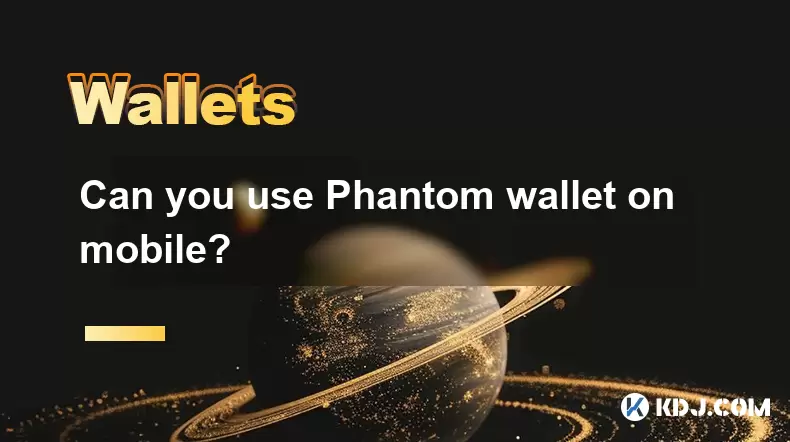
Can you use Phantom wallet on mobile?
Jul 01,2025 at 06:07pm
Understanding Phantom Wallet and Its Mobile CompatibilityPhantom wallet is a non-custodial cryptocurrency wallet primarily designed for interacting with the Solana blockchain. Initially developed as a browser extension, Phantom has expanded its functionality to include mobile platforms. This means users can access their Solana-based assets on mobile dev...

How to hide a token in Phantom wallet?
Jul 01,2025 at 05:49pm
Understanding the Phantom Wallet InterfacePhantom wallet is a popular non-custodial wallet used primarily for interacting with the Solana blockchain. It allows users to store, send, receive, and manage various tokens, including both fungible and non-fungible tokens (NFTs). Before attempting to hide a token, it's essential to understand how the wallet in...

How to enable auto-lock on Phantom wallet?
Jul 01,2025 at 04:01pm
What is Auto-Lock in Phantom Wallet?Phantom wallet is a popular non-custodial cryptocurrency wallet used primarily for interacting with the Solana blockchain. One of its security features includes the ability to set an auto-lock timer, which ensures that the wallet locks itself automatically after a period of inactivity. Auto-lock enhances security by p...

Why did I receive a random NFT in my Phantom wallet?
Jul 01,2025 at 09:00pm
Receiving an Unexpected NFT in Your Phantom WalletIf you've recently opened your Phantom wallet and noticed an unfamiliar NFT appearing in your collection, you're not alone. Many users have reported receiving random or unsolicited non-fungible tokens, often without any prior interaction with the project or sender. This phenomenon has become increasingly...

How to check transaction history on Phantom wallet?
Jul 01,2025 at 07:49pm
What Is Phantom Wallet?Phantom wallet is a popular non-custodial cryptocurrency wallet primarily used for interacting with the Solana blockchain. It allows users to store, send, receive, and manage their Solana-based tokens and NFTs securely. One of the essential features of any crypto wallet is the ability to check transaction history. Understanding ho...

How to restore Phantom wallet with a secret recovery phrase?
Jul 01,2025 at 02:56pm
What is a Phantom wallet and why might you need to restore it?Phantom is a popular non-custodial cryptocurrency wallet primarily used for interacting with the Solana blockchain. It allows users to store, send, receive, and stake SOL tokens as well as manage NFTs and other SPL tokens. Since Phantom wallet is non-custodial, users are solely responsible fo...

Can you use Phantom wallet on mobile?
Jul 01,2025 at 06:07pm
Understanding Phantom Wallet and Its Mobile CompatibilityPhantom wallet is a non-custodial cryptocurrency wallet primarily designed for interacting with the Solana blockchain. Initially developed as a browser extension, Phantom has expanded its functionality to include mobile platforms. This means users can access their Solana-based assets on mobile dev...
See all articles

























































































